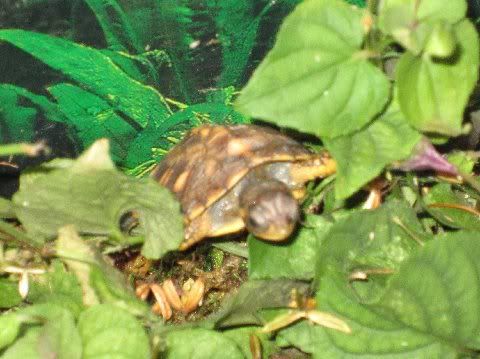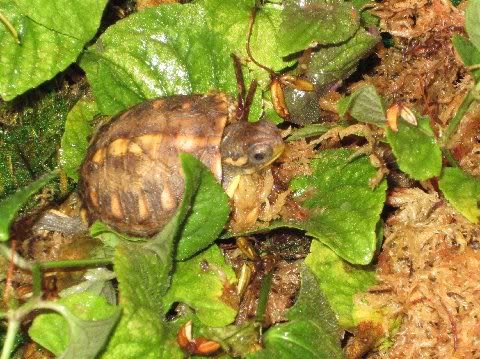All of you who are or have raised eastern indoors, do you see shell color appear in your turtles? It is currently understood that the bright coloration and the black coloration in EBT shells needs sunlight in order to develop. In the absence of sunlight, dull shades of light and dark brown are what appears, with some vague lighter areas that are where the pattern should develop.
Nearly all photos of indoor raised EBT's I've seen support this. Once moved outdoors, the colors appear over time, but it may take years.
Adults kept indoors or in full shade often lose the intensity of color.
So, has anyone used artificial light and raised babies that have intense color, or even any color in an indoor environment?
Steve
Nearly all photos of indoor raised EBT's I've seen support this. Once moved outdoors, the colors appear over time, but it may take years.
Adults kept indoors or in full shade often lose the intensity of color.
So, has anyone used artificial light and raised babies that have intense color, or even any color in an indoor environment?
Steve











